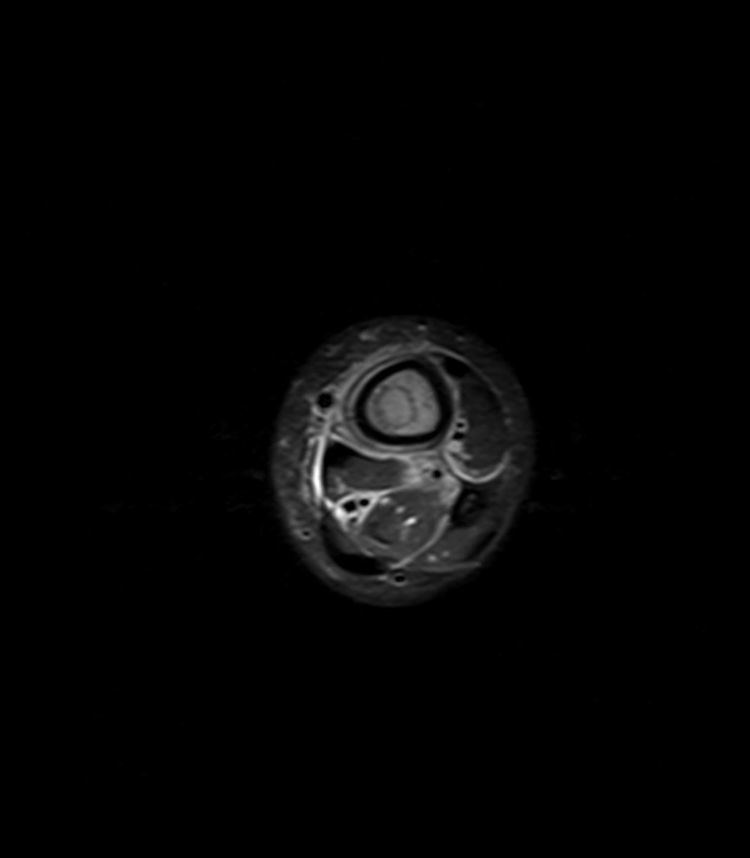Specialty rheumatology ICD-9-CM 730.1 | ICD-10 M86.8 eMedicine article/1248682 | |
 | ||
A Brodie abscess is a subacute osteomyelitis, which may persist for years before converting to a frank osteomyelitis. Classically, this may present after conversion as a draining abscess extending from the tibia out through the shin. Occasionally acute osteomyelitis may be contained to a localized area and walled off by fibrous and granulation tissue. This is termed as Brodie's abscess.
Contents
Most frequent causative organism is Staphylococcus aureus.
Clinical presentation
Localized pain, often nocturnal, alleviated by aspirin. Often mimics the symptoms of Osteoid osteoma, which is typically less than 1 cm in diameter.
Most frequent sites
Usually occurs at the metaphysis of long bones. Distal tibia, proximal tibia, distal femur, proximal or distal fibula, and distal radius.
Radiographic features
Oval, elliptical, or serpentine radiolucency usually greater than 1 cm surrounded by a heavily reactive sclerosis, granulation tissue, and a nidus often less than 1 cm. The margins often appear scalloped on radiograph. Brodie's abscess is best visualized using Computed tomography (CT) scan. Associated atrophy of soft tissue near the site of infection and shortening of the affected bone. Osteoblastoma may be a classic sign for Brodie's abscess.
History
Brodie abscess is named after Sir Benjamin Collins Brodie, 1st Baronet.
Treatment
Mainly surgical approach has to be taken. If cavity is small then surgical evacuation & curettage is performed under antibiotic cover. If cavity is large then after evacuation, packing with cancellous bone chips
